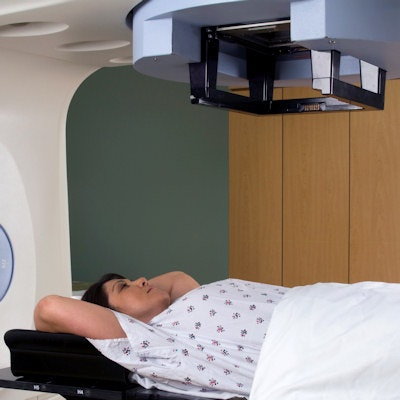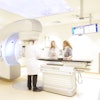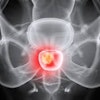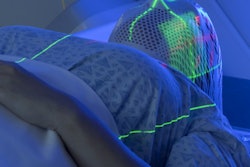
Routinely avoiding the esophagus during radiation therapy for breast cancer may decrease the risk of esophageal cancer years later, according to research from Ireland published October 7 in Radiotherapy and Oncology.
A team led by Dr. Frances Duane from St. Luke's Hospital in Dublin found that between 2010 and 2020, the average dose to the esophagus from partial breast and breast/chest wall radiation therapy regimens were usually less than 2 Gy, meaning "very small" radiation risk. However, an average esophagus dose of 11.4 Gy for radiotherapy with lymph nodes may nearly double cancer risk.
"Consideration of esophageal exposure during nodal radiotherapy planning may reduce the risks of radiation-related esophageal cancer for women irradiated today," Duane and colleagues wrote.
Most women diagnosed with early breast cancer receive adjuvant radiotherapy, which reduces the risk of breast cancer mortality for women after breast conserving surgery, as well as for women with mastectomy for node-positive disease.
However, with reward comes risk. Studies have identified there is a higher mortality risk from heart disease, lung cancer, and esophageal cancer after breast cancer radiotherapy. These risks depend on the incidental doses received by the heart, lung, and esophagus respectively, researchers said.
For esophageal cancer specifically, observational studies have shown increased risk after radiotherapy. But researchers said no systematic reviews of esophageal dose from modern breast cancer radiotherapy have been conducted.
"If average esophagus doses from modern radiotherapy were systematically reviewed and summarized, these doses could be combined with the dose-response relationship to estimate the typical risk of esophageal cancer from modern regimens," the study authors wrote.
The team wanted to provide such a review by evaluating esophagus doses from early breast cancer radiotherapy dosimetry studies published worldwide between 2010 and 2020. The group looked at dosage variation according to anatomical regions irradiated, as well as techniques used.
A total of 42 published studies from 18 countries reported average or maximum doses to the whole esophagus and were thus included in the study. The total number of regimens reporting average and maximum esophagus doses was 112 with 26 CT plans per regimen on average.
The researchers found that for partial-breast irradiation, the average esophageal dose was 0.2 Gy. For breast or chest wall radiotherapy, average doses were 1.8 Gy in 24 regimens and a maximum average 6.7 Gy in seven regimens.
For radiotherapy including a nodal region, average doses were higher, at 11.4 Gy in 61 regimens and a maximum average of 34.4 Gy in 55 regimens. Average mean esophagus doses were greater than 10 Gy for intensity-modulated radiation therapy to the lymph nodes (IMRT) but lower for other node techniques.
Duane et al said the time-consuming process of esophageal contouring along with the lack of guidelines is important because the average dose will depend on the length of esophagus contoured.
"For a few women at high risk of esophageal cancer [such as] current smokers who require IMRT to the regional lymph nodes, contouring, and consideration of esophageal exposure may help to reduce their risks of radiation-related esophageal cancer," the study authors wrote.
They added however that most women being considered for breast cancer radiotherapy today have a less than 1% absolute excess risk and that radiotherapy's risks are "likely" outweighed by the benefits.




















